[ad_1]
Travel Mamas generally receives compensation and/or hosted journey and pattern merchandise associated to weblog posts. This story could embrace affiliate hyperlinks for which we obtain a small fee at no further value to customers. As an Amazon Associate I earn cash from qualifying purchases. Be positive to examine with companies and areas relating to journey restrictions and security precautions earlier than visiting.
Although they share a continent, European international locations and areas take pleasure in their very own particular Christmas customs. To compile this checklist of bizarre vacation celebrations, I requested journey writers from across the globe to share their favorites. From a present pooping log in Spain to the golden pig of the Czech Republic, let’s discover 12 wacky Christmas traditions in Europe.
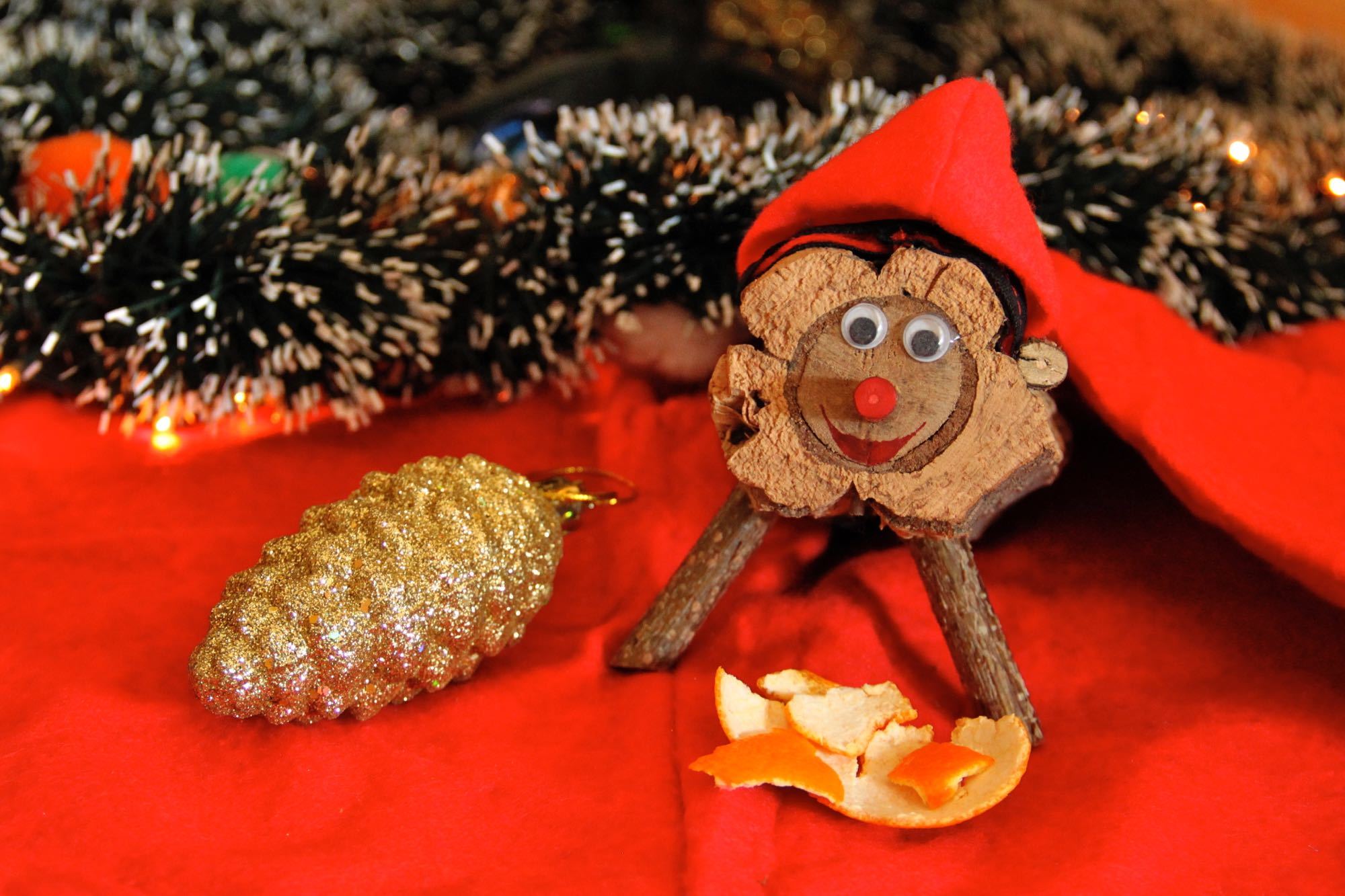
1. The Gift Pooping Log from Catalonia, Spain
Children everywhere in the northeastern area of Spain in Catalonia cherish the tió de nadal, or caga tió. He’s a smiling log that poops presents yearly on Christmas Eve.
The scatological custom goes like this: Starting on December eighth, households carry out the pooping log and place him in the lounge. He has a contented face that is painted on him and has two entrance sticks as legs. He additionally wears a barretina (a crimson Catalan hat).
Every night after dinner, kids depart clementine and orange peels, sweet, nougats, and different meals close to him. They additionally place a blanket on him, so he would not catch a chilly at evening.
The tió eats the meals in a single day when nobody is watching and magically gobbles it up by morning! On Christmas Eve, the log is able to defecate presents.
A mum or dad covers him with a blanket, and the children sing conventional caga tió Christmas carols. While they do that, they hit him with a stick to assist him poop. Then, voila! They raise the blanket to seek out small presents that he excreted, like sweets or toys.
There are many tales of its origin, however one legend is that the pooping log began centuries in the past in a rural space of Catalonia. The chilly properties used logs to maintain the chimneys operating. As the log supplied warmth and lightweight for the fireside, the youngsters took care of him. It’s unclear how a face confirmed up on him!
— Justine Ancheta, Latitude 41
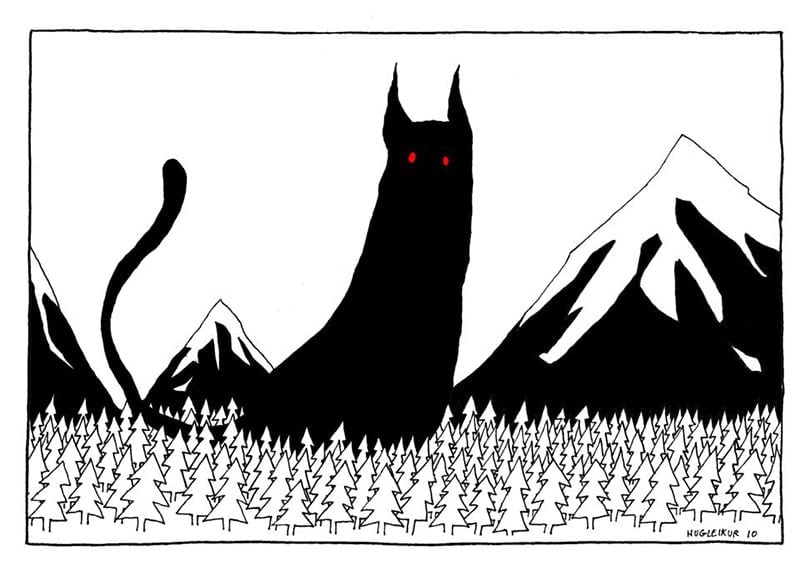
Scary Trolls and the Yule Cat in Iceland
Considering that the primary time he met Santa Claus, my then 2-year-old son wailed his head off, he wouldn’t do effectively in Iceland. That’s as a result of Icelandic Christmas traditions contain monsters.
First, you’ve got Gryla, a troll/ogre mixture who lives on a mountain along with her sons. She’s on her third husband, having killed the primary two husbands as a result of they have been boring. She likes to seize naughty kids in her bag and boil them alive into her favourite stew.
Gryla has 13 sons, the Yule Lads, who go to Icelandic kids through the 13 days within the run-up to Christmas. The Yule Lads depart well-behaved kids sweet and little toys in a shoe positioned on the windowsill. The Yule Lads depart a rotten potato within the shoe if the kid has been naughty.
The household pet is a big black cat, Yule Cat, who’s non-discriminatory in his tastes. He likes to eat each kids and adults. Plus, he doesn’t even care in the event you’ve been naughty or good. Yule Cat solely will get to eat as soon as per 12 months, so maybe his neutral urge for food is because of starvation.
The solely strategy to keep away from being a Yule Cat meal is to get a brand new piece of clothes at Christmas. (No extra whines from the kiddies when that reward is a sweater as an alternative of a toy!)
— Shobha George, The Expat Travel Mama
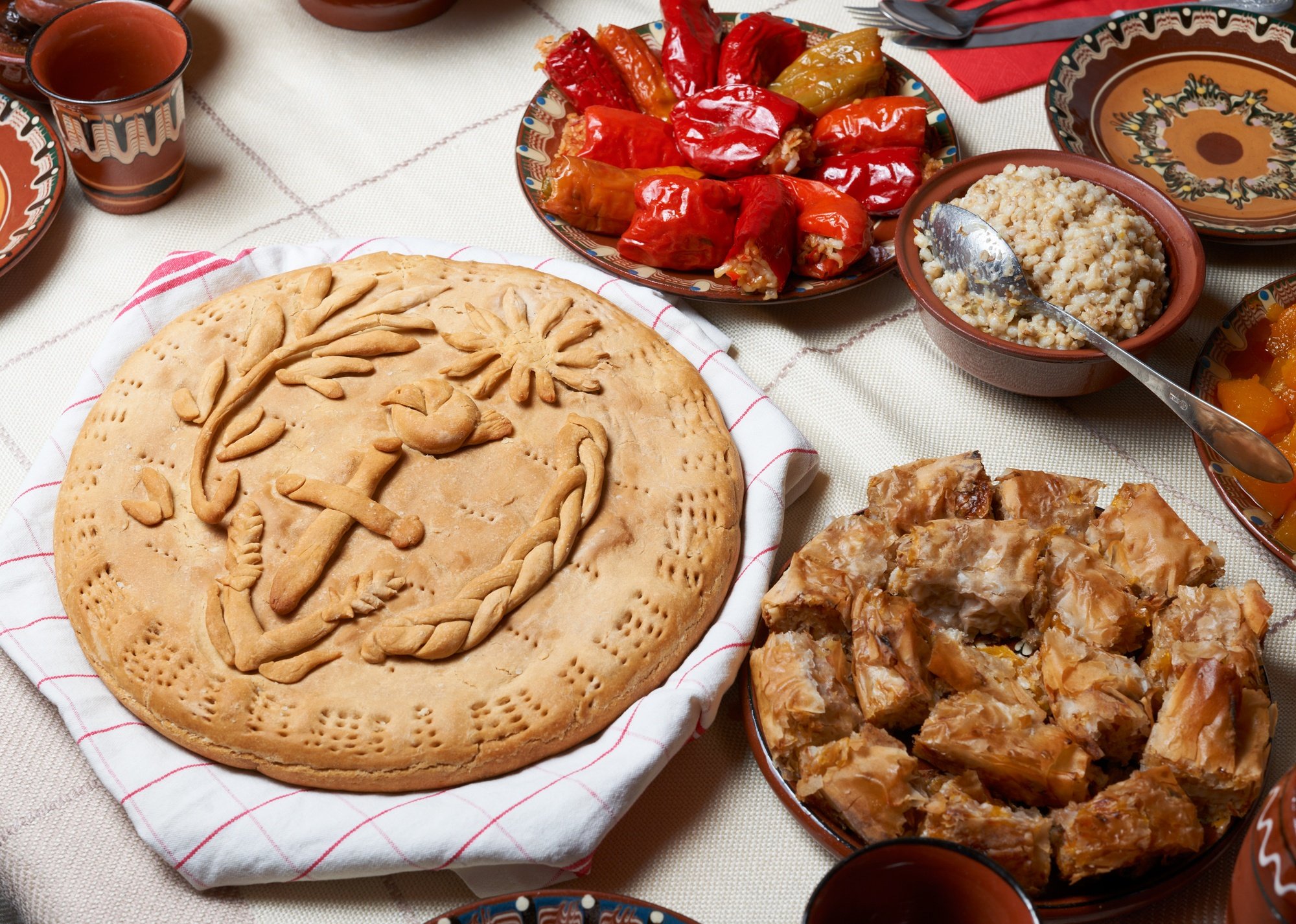
3. Christmas Pigs and Carolers in Bulgaria
Christmas traditions in Bulgaria are an intriguing mixture of pagan rituals and Orthodox Christian customs. In this European nation, Christmas Eve is definitely extra essential than Christmas Day itself.
The giant meal on Christmas Eve is all the time vegetarian and should encompass an uneven variety of dishes – 7, 9 or 11. December twenty fourth can also be whenever you crack a walnut open to foretell how good or unhealthy the following 12 months will deal with you.
Originally, there have been no Christmas presents on December twenty fifth and there was no Santa Claus in Bulgaria. Instead, on Christmas Day pigs have been slaughtered.
In Orthodox Christianity, the 40 days earlier than Christmas are a interval of fasting, therefore the vegetarian Christmas Eve meal, after which on Christmas Day meat might be lastly eaten. So, pig slaughtering turned a ritual in itself, and in some locations, it will last as long as three days.
Finally, on Christmas Day there are the standard carol singers known as Koledari. These teams of males go from home to deal with to sing and dance. They want for well-being, well being, and prosperity, and chase the unhealthy spirits away. In change, they’re given ritual breads and ring-shaped buns.
Today, though Santa Claus additionally makes a detour to Bulgaria, most of those Christmas celebrations are nonetheless alive and practiced, besides maybe for the pig-slaughtering one, which is fading away and could be discovered solely in villages.
— Daniela Koleva, IpanemaTravels.com
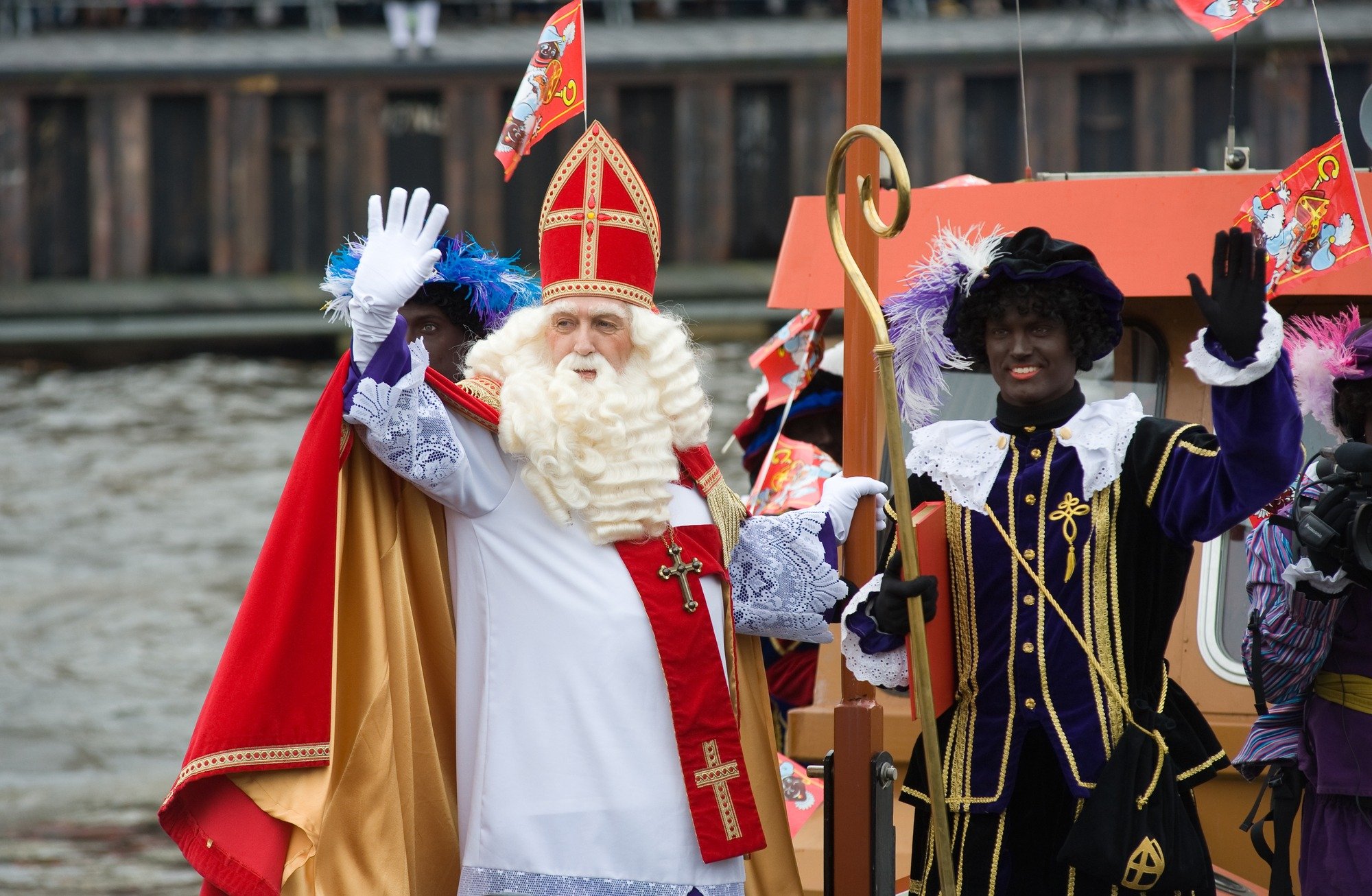
4. Sinterklaas and the Black Peters within the Netherlands
The Christmas season begins within the Netherlands with the arrival of Sinterklaas in November yearly. Sinterklaas and his companions (often called Black Peters) sail into one of many Dutch ports from Spain, the place they reside the remainder of the 12 months. Sinterklaas is an older gentleman in a bishop’s clothes who rides a white horse.
The Black Peters are speculated to be Moors from Spain and have historically donned blackface. Needless to say, the racist implications have triggered a variety of controversy within the Netherlands lately.
The Dutch have been proof against altering their beloved custom, although. They insist the Black Peters are darkish as a result of they obtained caught within the chimney for a very long time.
When Sinterklaas is on the town, the youngsters depart a shoe out at bedtime within the hopes of getting a small reward. Naughty kids get a lump of coal of their sneakers as an alternative.
Sinterklaas enjoyable culminates on December 5, when he drops off items for every youngster earlier than he heads again to Spain.
— Shobha George, Just Go Places Blog
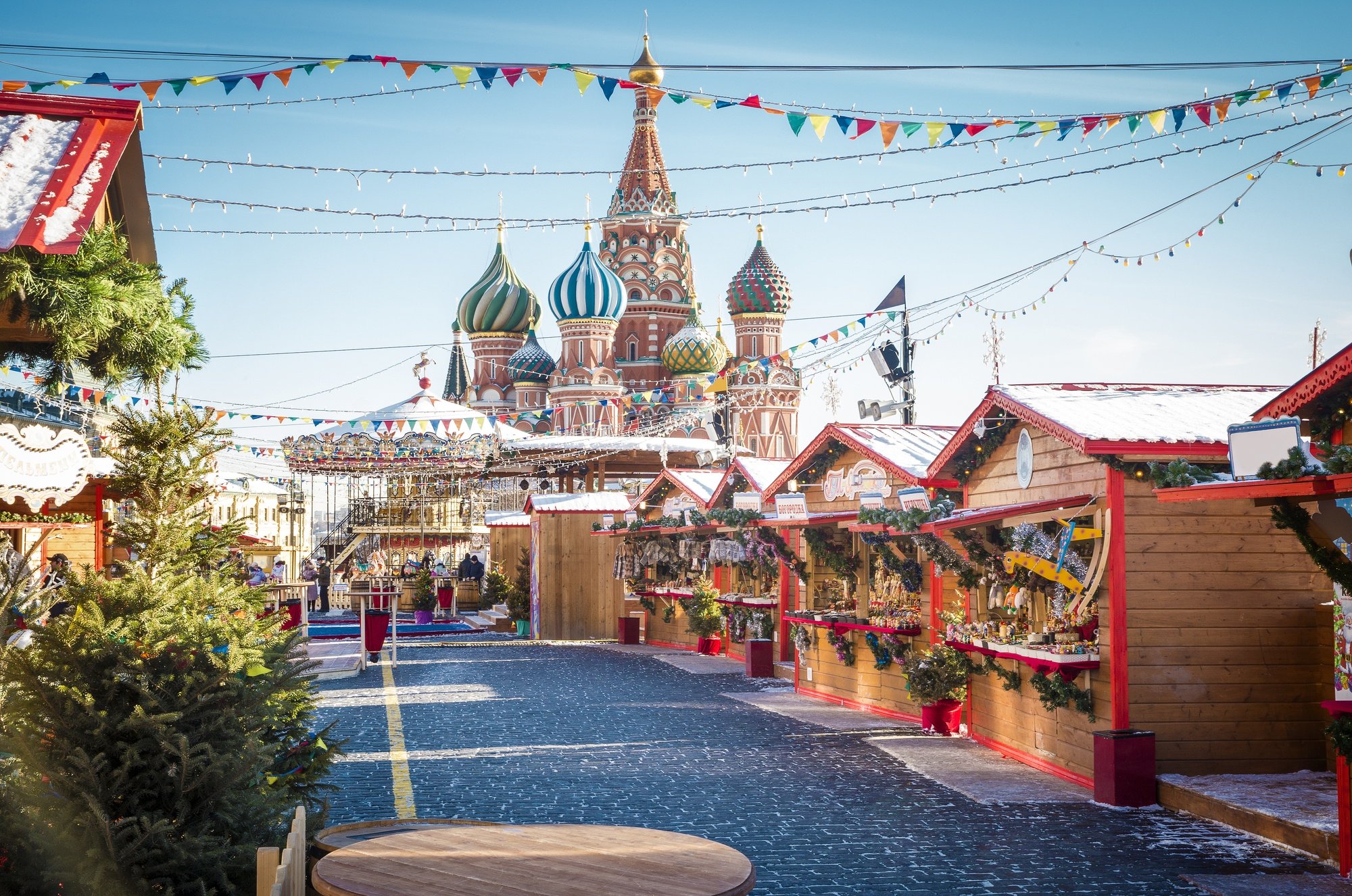
5. Christmas Fortune Tellers in Russia
Fortune telling is an fascinating custom that’s completed in Russia through the vacation season. Russian Orthodox Epiphany is taken into account the perfect time of the 12 months to foretell the longer term. It takes place from January sixth (Christmas Eve for Orthodox Christians) via January 19.
It is most typical for youthful women to get collectively and carry out these predictions. They often try to find what’s in retailer for them through the New Year. They additionally search solutions to questions on their extra distant futures, similar to when they are going to get married or if they are going to get again along with their boyfriends.
These fortunes could be predicted in quite a lot of methods – from decoding newspaper ashes to utilizing mirrors and candles and burning threads! In current occasions, most ladies do that of their properties. But Russian banyas (or saunas) have been the place these predictions happened up to now.
— Lindsey Puls, Have Clothes, Will Travel
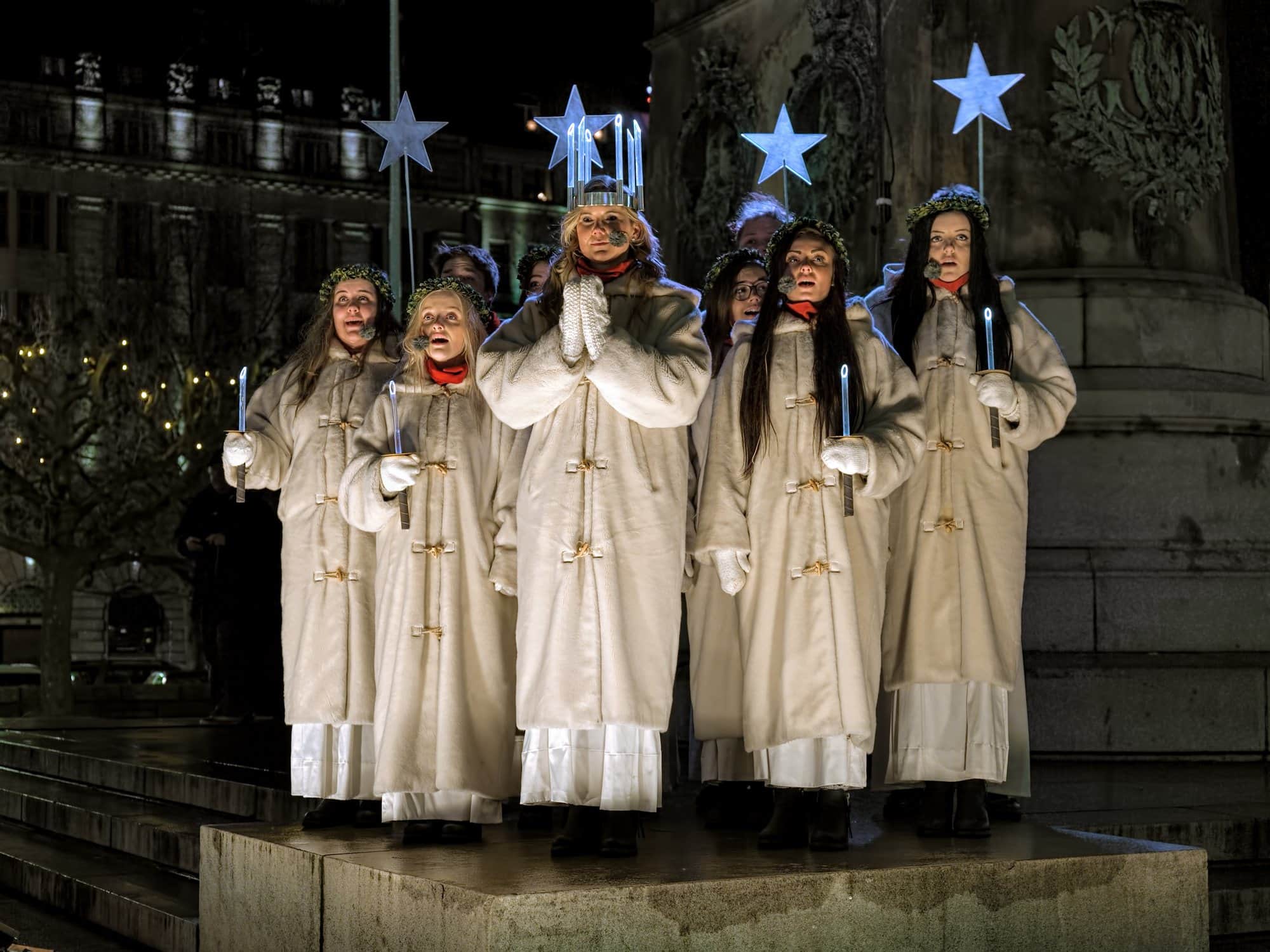
6. St. Lucy’s Day in Sweden
Every December 13, Sweden celebrates St. Lucy’s Day. This vacation relies on tales advised by the early missionaries who introduced Christianity to the nation.
St. Lucy was a Christian woman who was martyred within the 4th century for bringing meals to Christians who have been hiding from persecution in Roman catacombs. She wore candles on her head in an effort to hold her palms free to carry the meals.
Every 12 months Sweden picks a lady to be the nationwide St. Lucy. Local cities and villages additionally choose their very own St. Lucys. The competitors is fierce.
The Lucys gown in white robes and put on crowns of white candles on their head. Traditionally, the crowns are manufactured from lingonberries and maintain lit candles. Little boys be a part of within the custom by sporting white robes and holding a star on a follow be Star Boys.
The Lucys go to hospitals and outdated individuals. Then they hand out gingersnap biscuits and candy raisin buns formed like St. Lucia’s cats (lussekatter).
If you want to attempt your hand at making gingersnap biscuits or the raisin buns, then the official web site for the nation of Sweden has recipes for each.
— Shobha George, Just Go Places Blog
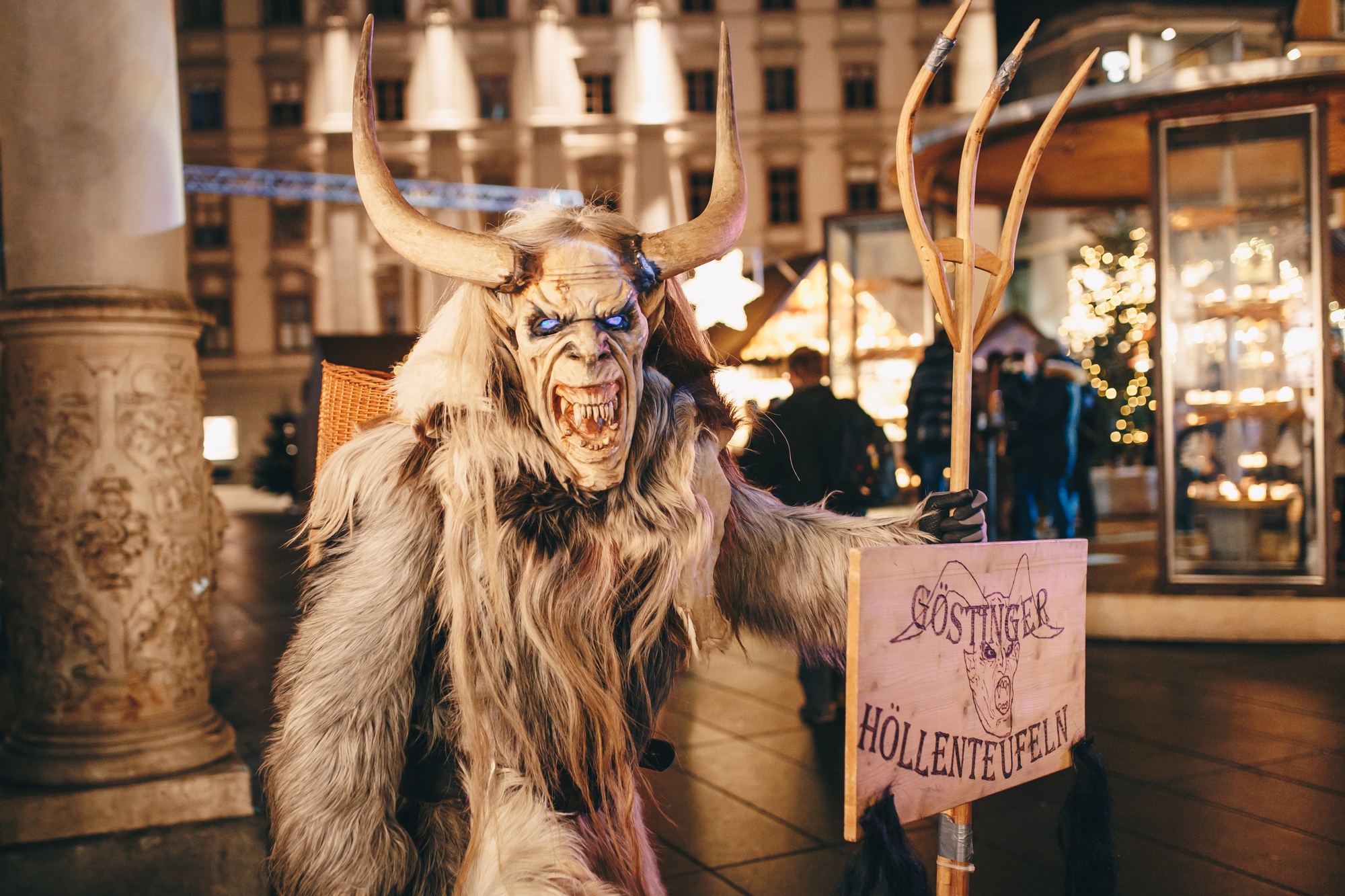
7. Krampus the Christmas Devil in Austria and Germany
Growing up as a child celebrating Christmas in North Georgia, a lump of coal in your stocking from Santa was simply concerning the worst menace conceivable across the holidays. But in Alpine Austria and Germany, the place the darkish Grimm fairy tales have been born, there’s Krampus. Possibly the world’s weirdest Christmas custom, Krampus is an insane satan sure in chains, with matted fur, stag horns, and flaming coals for eyes.
On December 5, the evening earlier than the Feast of St. Nicholas, Krampusnacht is widely known. The half-goat, half-demon takes to the streets to punish naughty girls and boys for his or her misdeeds. Some variations recommend he’ll swat them with birch branches, whereas others contain a sack for taking them to Hell.
Though this creepy Christmas custom is frequent in Central Europe, no person’s sure the place the Krampus idea originated. Some historians consider he is a holdover from the Alpine area’s pagan previous, which targeted on winter solstice and was demonized by the Catholic Church.
If you see Krampus throughout your European travels, then it is custom to supply him some schnapps. It may not make him go away, however hopefully you will be spared a swat from his department!
— Bret Love and Mary Gabbett, Blue Ridge Mountains Travel Guide
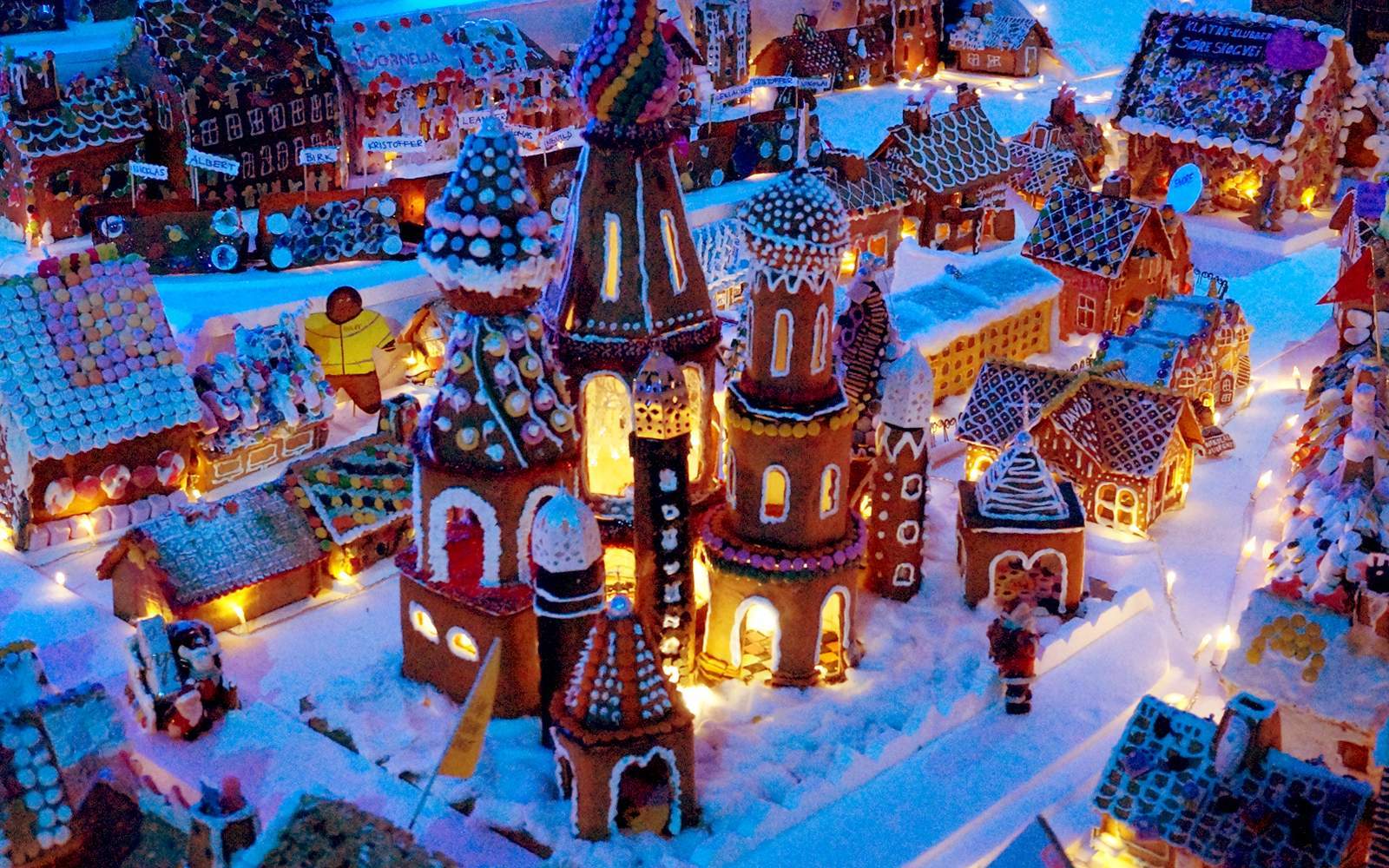
8. The Biggest Christmas Gingerbread Village in Norway
One of the coziest and most original traditions in Europe is that of the Pepperkakebyen (gingerbread village) in Bergen, Norway. Visiting Bergen in winter could seem to be an unlikely selection for a lot of because the coastal metropolis is thought extra for its rain than its snow.
But when you pop inside this magical gingerbread land, you’ll assume you are within the snowy, far north in a land distant from the Norwegian metropolis middle. Pepperkakebyen began in 1991 when native schoolchildren began developing gingerbread homes resembling Bergen points of interest, boats, automobiles, and even some iconic worldwide landmarks.
It is the largest gingerbread metropolis on the planet nowadays and it takes place in Bergen from mid-November via the month of December yearly. The income created from Pepperkakebyen are all donated to an area charity for kids in want.
— Megan Starr, MeganStarr.com
9. Mummers’ Holiday Plays within the United Kingdom
Mummers’ performs are dramatizations of people tales held at Christmastime in lots of components of the United Kingdom. This custom began within the British Isles and unfold to British colonies.
These performs are carried out, historically, by strange individuals slightly than skilled actors and are designed as a enjoyable strategy to let off steam through the holidays.
There are a number of variations of mummering. The most typical plot entails fight between two characters, often Saint (or King) George and an evil character.
The evil one is killed however is then miraculously revived by a comic book physician character, bringing the play to an finish. The character who’s killed and is revived differs between performs however is usually a dragon or a personality known as Turkey Sniper.
Other characters additionally get entangled. They all have fairly fantastic names: Clever Legs, the Old ‘Oss, Bold Granny, and Mazzant Binnit are just a few. Plus, Father Christmas additionally virtually all the time makes an look.
— Chris Young, EnglandExplore.com
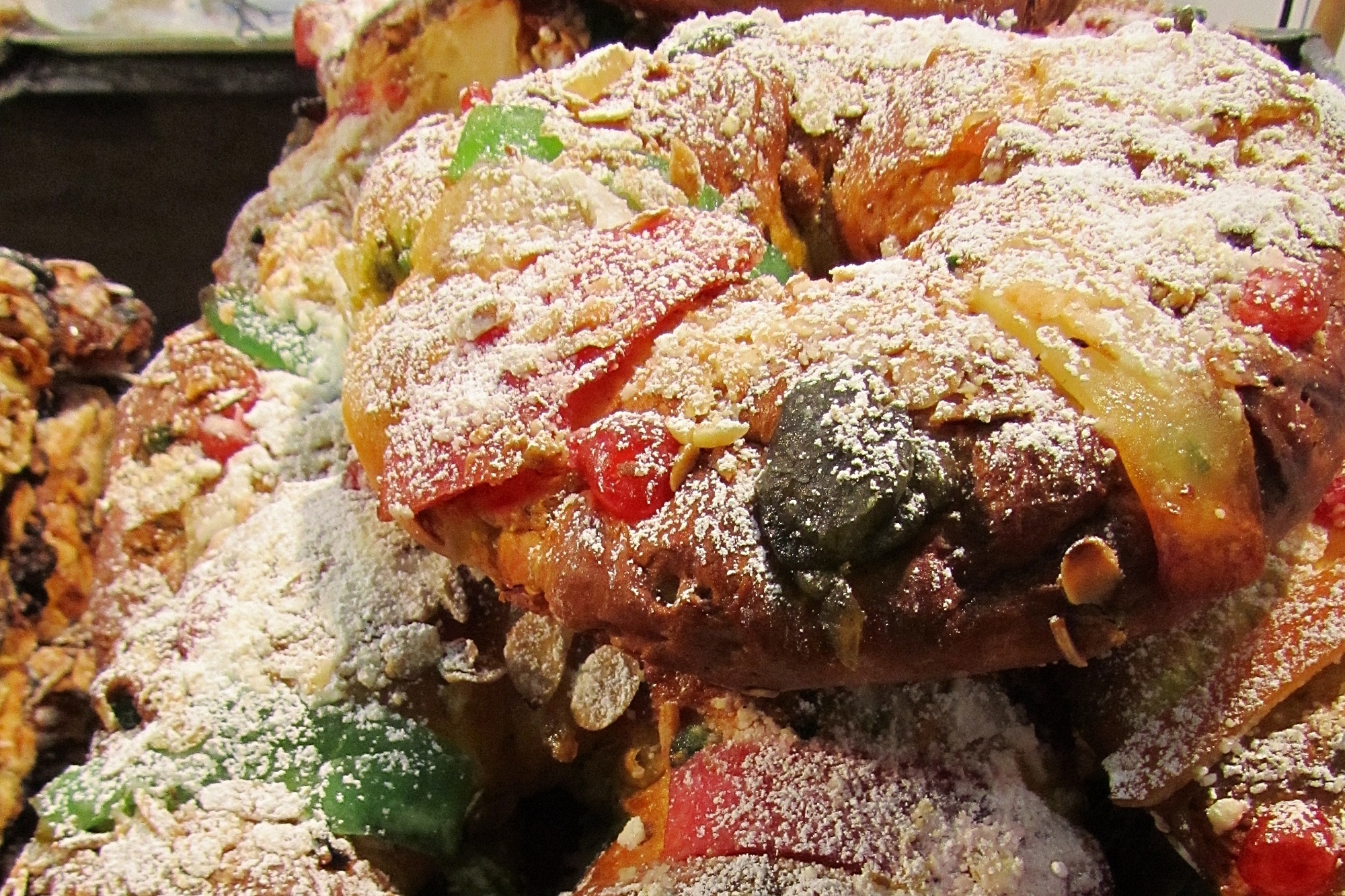
10. King’s Cakes in Portugal
Portugal’s conventional Christmas cake, Bolo-rei, or king’s cake, historically contained a few surprises. The cake itself is a doughy circle that’s richly jeweled in brightly coloured dried fruit.
King’s cake originated within the French courts of Louis XIV and have become widespread in Portugal within the mid-19th century. In holding with French Christmas celebrations, a dried fava bean and a small toy could be baked into every Bolo-rei.
Whoever obtained the slice with the bean could be the king or queen for the day. This entitled the winner to a want in addition to the privilege of paying for subsequent 12 months’s cake. This customized has change into a much-loved a part of Portuguese Christmas traditions.
Although, over time, the fava bean developed into cats, good luck charms, and plastic toys. That is till the federal government banned the sale of muffins containing such non-food gadgets. Homemade muffins, nonetheless, nonetheless comprise the factor of shock.
— Julie Fox, Julie Dawn Fox in Portugal
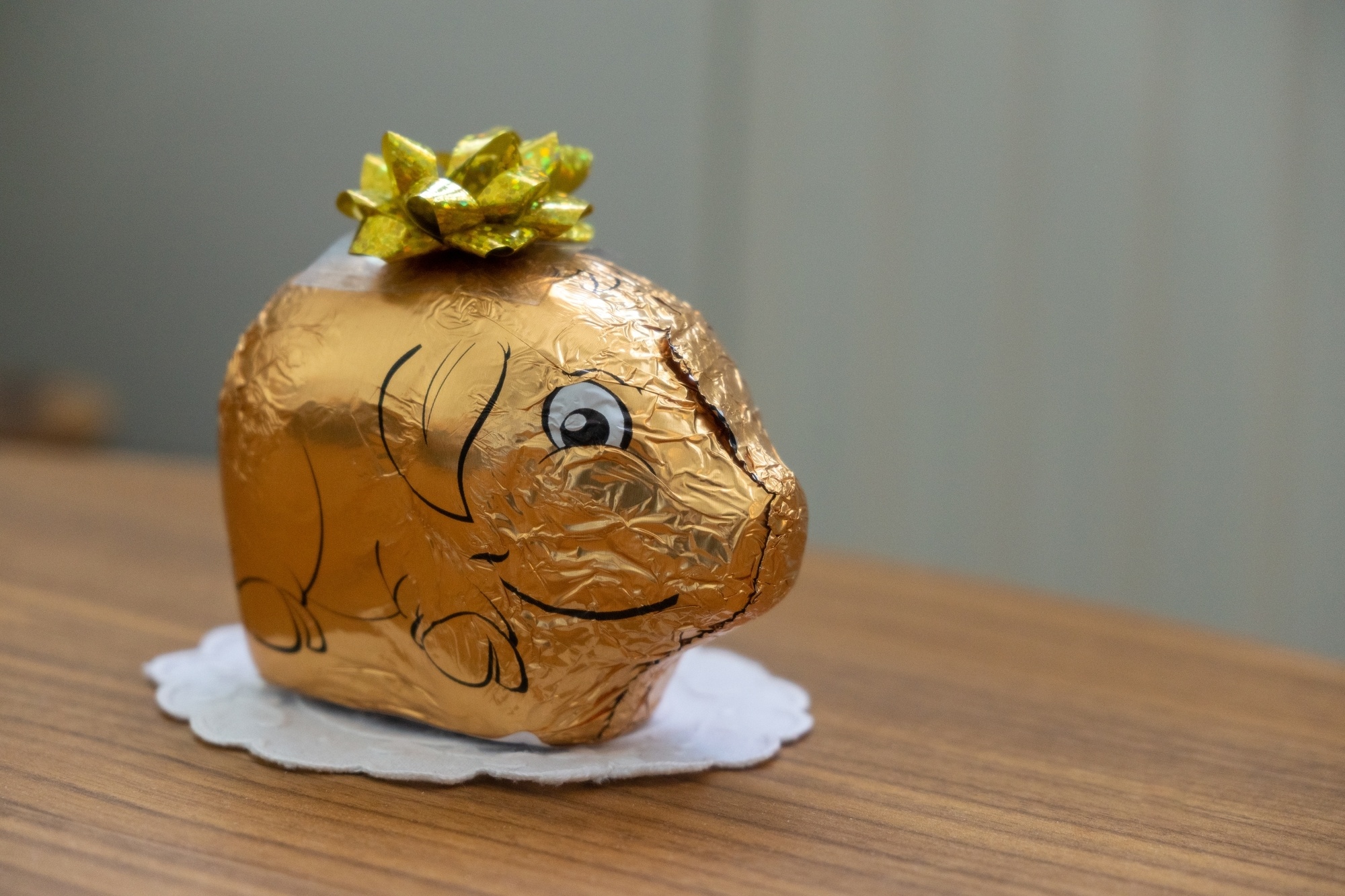
11. The Golden Pig of the Czech Republic and Slovakia
In the Czech Republic and Slovakia, the principle time of 12 months to rejoice Christmas is on the night of December twenty fourth. That’s when the entire household has a Christmas Eve dinner collectively, after which presents are unwrapped.
To hold keen kids on a mission to eat their primary Christmas meal, a fasting custom developed. Essentially, all people is meant to not eat through the day on December 24 in order to have an urge for food for the standard Christmas dinner. This applies to meals solely, as Christmas-themed pastries, such because the candy braided bun known as vánočka or Christmas cookies are allowed.
If the youngsters handle to carry off consuming, then they’re promised to see a golden pig. It is alleged the golden pig custom developed already within the Middle Ages when fasting would apply to meat meals solely.
When I used to be a toddler rising up within the Czech Republic, I spent an excessive amount of time looking the window, trying to find the elusive golden pig. I even thought I noticed it a number of occasions.
Throughout the years, native confectioners caught up. You can now simply purchase small pigs manufactured from chocolate wrapped in golden tinfoil. Parents who nonetheless adhere to the custom place the golden pig on a windowsill or anyplace it seems the pig got here in from outdoor to reward good kids.
— Veronika Primm, Travel Geekery

12. The Thirteen Christmas Desserts of Provence, France
Thirteen desserts could seem to be a decadent and flamboyant feast, however to the individuals of Provence, it is a custom that has stood the check of time. First talked about in print round 100 years in the past, it is a Christmas customized that is beloved by many.
Each Christmas Eve, after attending midnight mass, three tablecloths are laid out bearing 13 desserts. These symbolize the Holy Trinity.
Everyone is anticipated to attempt somewhat of every dessert. But, in true French fashion, the choices are small and delicate.
The 13 desserts aren’t strictly set, however sometimes embrace dried or candied fruits, recent fruits similar to clementines or apples, biscuits (cookies), nougat, and caramelized nuts. There’s additionally usually a Bûche de Noël (Yule log cake).
Every city in Provence provides its personal specialty to the combination. In Marseille, it is Navettes (cylindrical cookies flavored with orange blossom). In Aix-en-Provence, it is Calisson (candies made with finely crushed almonds and candied fruits. Meanwhile, within the Alps, you will discover candy Bugnes (deep-fried fritters).
Tradition dictates the desserts should keep out for 3 days. The three-theme is robust with this European Christmas custom! After that point interval, they’re going to lastly be packed away…if there’s something left on the twenty seventh of December.
These days, not everybody takes to the custom so strictly, however you will be hard-pressed to seek out somebody in Provence who hasn’t nibbled on a minimum of somewhat nougat or creamy Bûche de Noël throughout this festive season!
— Nadine Maffre, Le Long Weekend
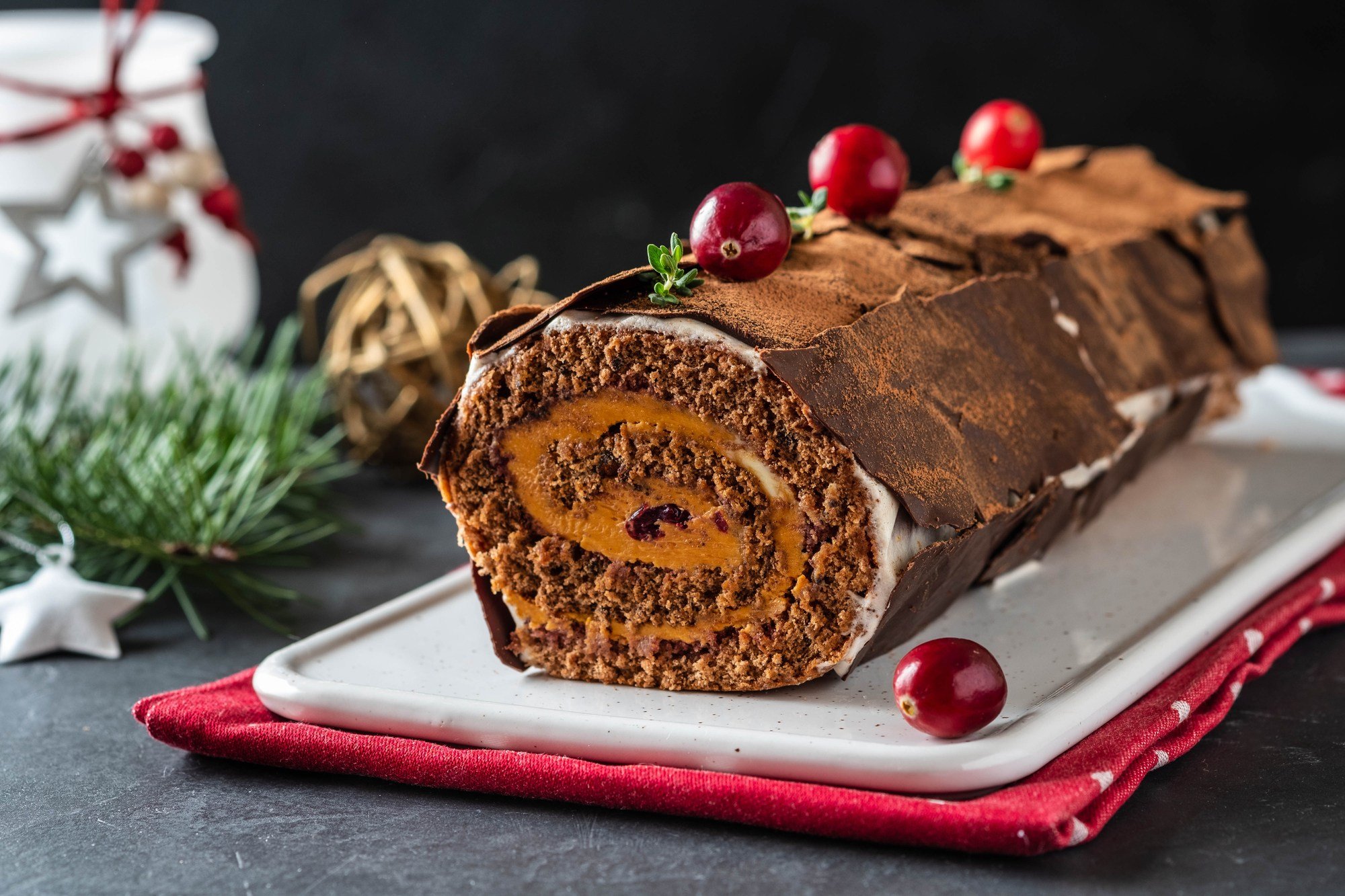
Are These Christmas Traditions in Europe Wacky?
These age-old traditions in Europe could sound uncommon to North American readers, however they are not so dissimilar from our personal vacation traditions.
Instead of a shoe, kids put out a stocking to obtain small items at Christmas. Whereas Icelanders have Gryla and the Yule Cat to maintain children on their finest habits, Elf on the Shelf tattles on naughty children to good ol’ St. Nick. And Santa Claus positive does sound lots like Sinterklaas, would not it?
Maybe these Christmas traditions in Europe aren’t so wacky in spite of everything!
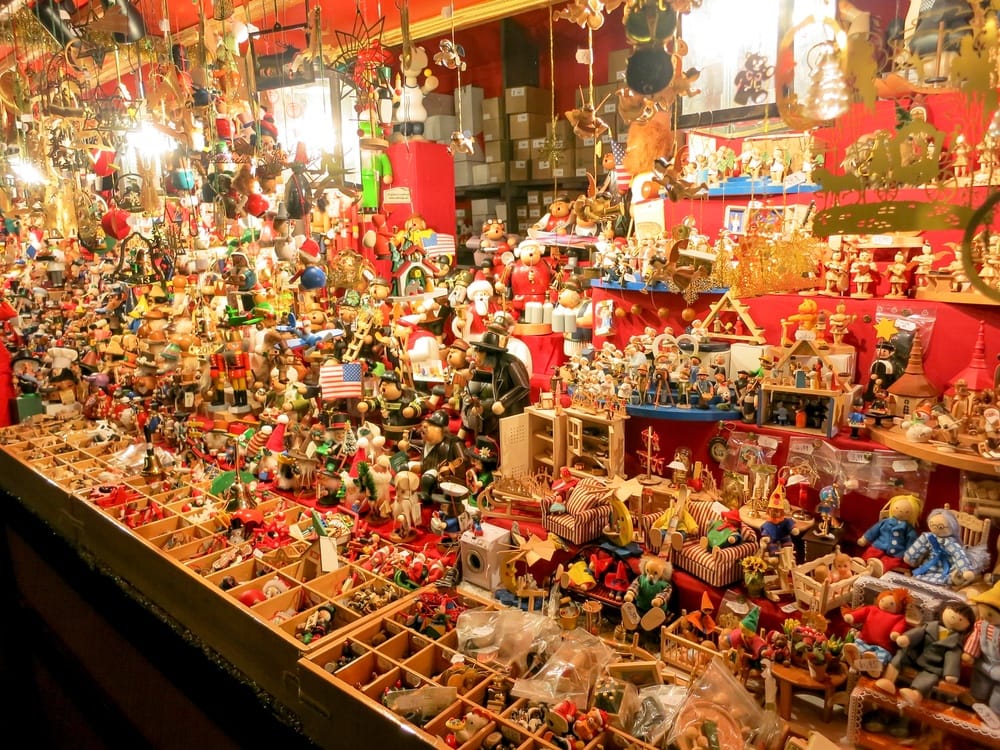
Learn About More Holiday Traditions
Learn about enjoyable New Year’s Eve traditions from Europe.
Dreaming of a white Christmas? Discover the finest white Christmas holidays for households.
Take a have a look at the origin and traditions of Kwanzaa.
Bring worldwide flavors of Christmas dwelling with Christmas Around the World: Recipes | Customs.
Teach children about how different cultures rejoice holidays with Celebrations Around the World or the Winter Holidays Around the World coloring e-book.
Save this List of European Christmas Traditions
For future reference, hold these merry Christmas traditions from Europe. Simply pin the picture under to Pinterest. We hope you’ll observe Travel Mamas on Pinterest whilst you’re at it!
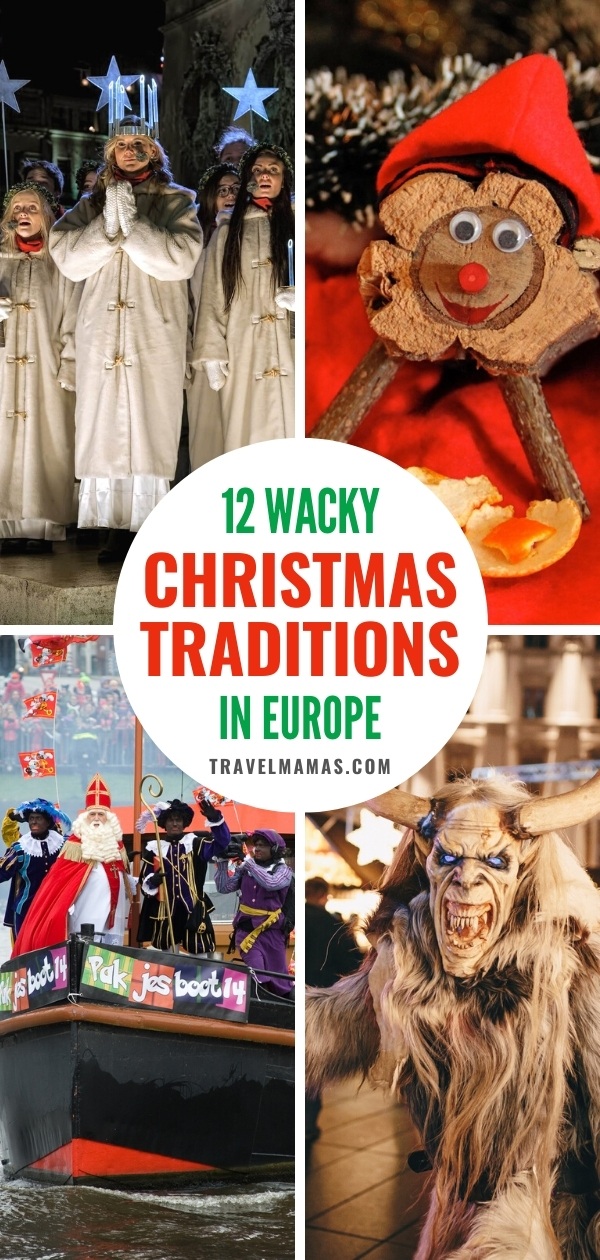
What do you consider these totally different Christmas traditions in Europe? What uncommon vacation celebrations does your loved ones take pleasure in? Let us know within the feedback under!
You may additionally like:



